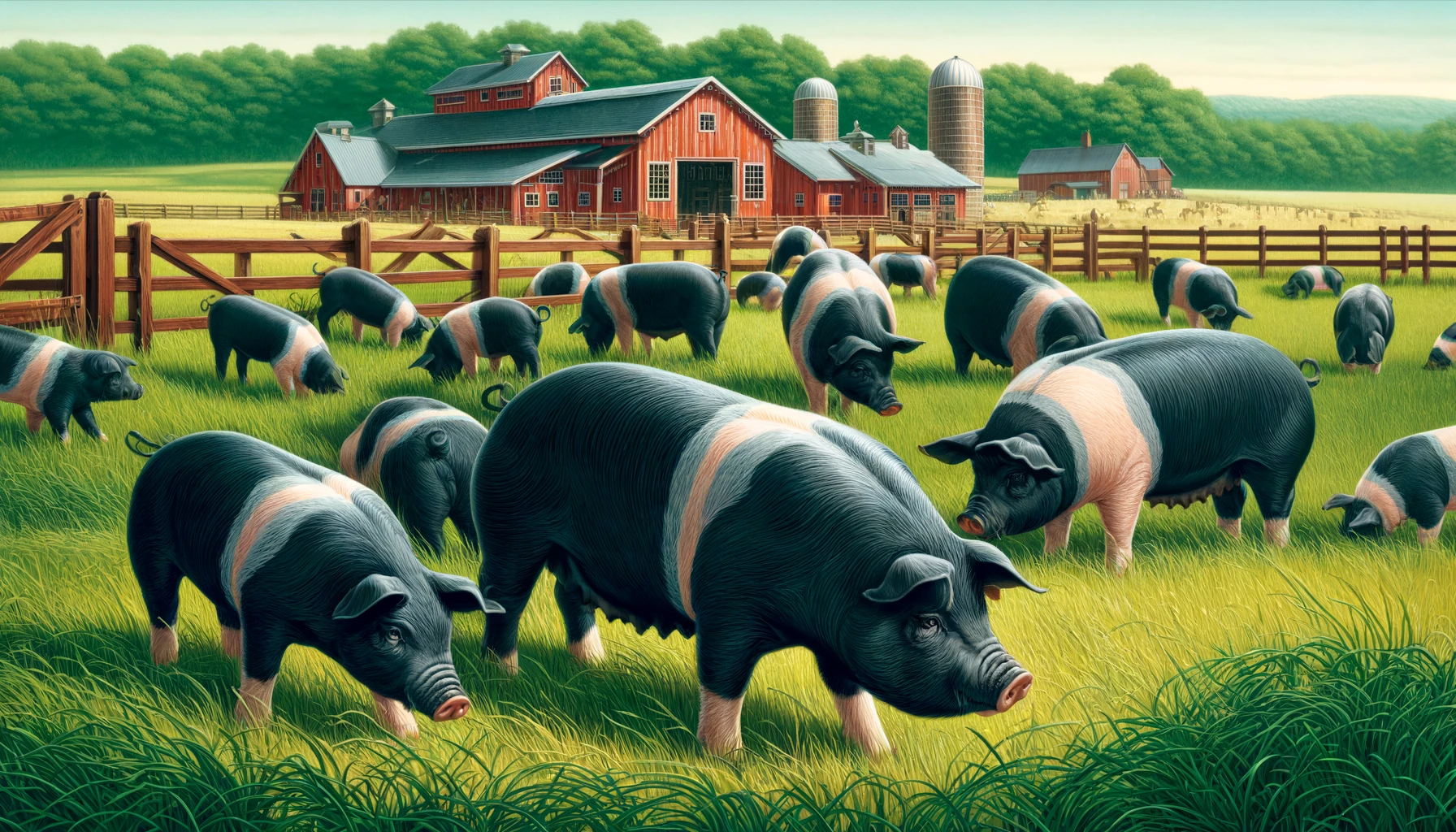
Unveiling the Hampshire Hog: A Swine Breed Steeped in History and Excellence
Welcome to the world of the Hampshire hog, a breed with a rich heritage and exceptional qualities that have made it a favorite among farmers and pork enthusiasts for generations. Let’s delve into the fascinating story of this iconic swine breed, exploring its origins, physical characteristics, breeding practices, commercial significance, and enduring presence in modern agriculture.
Origins and History:
The Hampshire hog’s story begins in the verdant fields of Hampshire, England, where it was first bred in the early 19th century. Developed from a blend of indigenous English swine breeds and imported American stock, the Hampshire hog quickly gained popularity for its robust constitution and rapid growth rate. Its journey across the Atlantic to the United States brought it to the attention of American farmers, who were drawn to its adaptability and superior meat quality.
In the United States, the Hampshire hog thrived, becoming a mainstay of American agriculture and earning a reputation for its distinctive appearance and excellent meat characteristics. Today, Hampshire hogs are bred and raised in various regions around the world, continuing to embody the legacy of their English and American ancestors.
Physical Characteristics:
One of the most striking features of the Hampshire hog is its distinctive appearance. With a solid black coat and a distinctive white belt encircling its body, the Hampshire hog is easily recognizable in any swine herd. This “belted” or “saddleback” marking sets it apart from other breeds and adds to its visual appeal.
In addition to its unique color pattern, the Hampshire hog is known for its sturdy build, erect ears, and muscular frame. Boars typically exhibit larger sizes and more pronounced musculature than sows, reflecting the breed’s heritage as a dual-purpose animal prized for both meat production and breeding purposes.
Breeding and Genetics:
Selective breeding has played a critical role in shaping the characteristics and performance of the Hampshire hog breed over the years. Breeders focus on traits such as growth rate, feed efficiency, meat quality, and reproductive performance to enhance the breed’s overall productivity and profitability.
Modern breeding programs utilize advanced genetic selection techniques to identify superior breeding stock and accelerate genetic progress. By selecting for traits associated with meat yield, carcass quality, and disease resistance, breeders aim to produce Hampshire hogs that meet the demands of today’s pork market while preserving the integrity of the breed’s heritage.
Commercial Significance:
The Hampshire hog holds significant commercial value within the pork industry, thanks to its exceptional meat quality and favorable production characteristics. Hampshire pork is prized for its firm texture, rich flavor, and well-marbled meat, making it a preferred choice for various pork products, including fresh cuts, cured meats, and specialty charcuterie.
In addition to its culinary appeal, the Hampshire hog’s efficient feed conversion, rapid growth rate, and high lean meat yield make it an economically viable option for pork producers seeking to maximize profitability and efficiency in their operations. Whether raised in conventional production systems or niche markets focused on heritage breeds, Hampshire hogs continue to play a vital role in meeting the diverse demands of the modern pork industry.
Hampshire Hogs in Agriculture Today:
Despite the evolution of agricultural practices and the emergence of new swine breeds, Hampshire hogs remain a popular choice among farmers and pork producers worldwide. Their adaptability to various production environments, combined with their superior meat quality and distinctive appearance, ensures their continued relevance and importance in modern agriculture.
In addition to their commercial significance, Hampshire hogs also play a valuable role in educational programs, agricultural exhibitions, and heritage conservation efforts aimed at preserving and promoting traditional swine breeds. Their presence in 4-H clubs, county fairs, and agricultural shows provides opportunities for youth and enthusiasts to learn about swine husbandry, breed standards, and the cultural significance of heritage livestock breeds.
Conclusion:
In conclusion, the Hampshire hog stands as a symbol of resilience, excellence, and tradition in the world of swine breeding and agriculture. From its humble origins in the English countryside to its widespread popularity in modern pork production, the Hampshire hog embodies the enduring legacy of centuries-old breeding practices and the enduring appeal of heritage livestock breeds.
As farmers and consumers alike continue to recognize the value of quality meat, sustainable farming practices, and heritage breeds, the Hampshire hog remains a cornerstone of the pork industry, providing a source of premium pork products and preserving a piece of agricultural history for future generations to cherish and enjoy.
Join us in celebrating the Hampshire hog and the enduring legacy of heritage livestock breeds in agriculture.
Explore More:
- Agribusiness
- Dairy
- Education
- Farming
- News
- Ranching
- Rodeo
- World Agriculture Directory
- Agriculture Dictionary
- Agriculture Directory
- Farm Show EU
